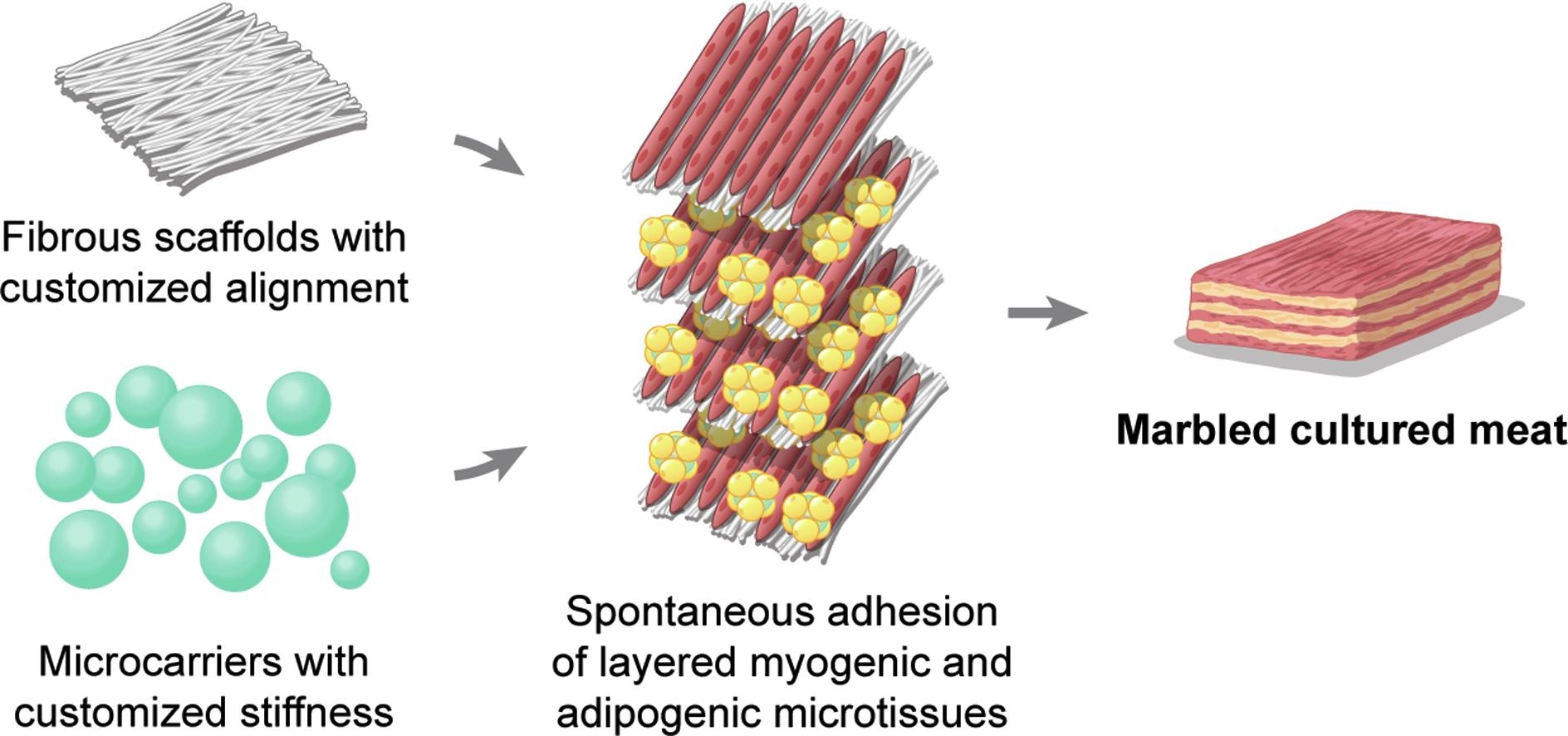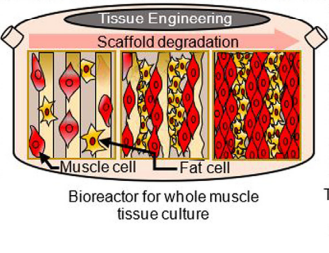- Overview
- Summary
- Funding
- Cite This Publication
Overview
Who: Scott J. Allan, Marianne J. Ellis, Paul A. De Bank
Published: May 31, 2021
Where: Journal of Biomedical Materials Research Part A
Key Takeaway: Decellularized grass is an attractive scaffold option for cultured meat. Not only is it cheap and readily available, its grooves help promote myofiber alignment.
Research Topics:
Summary
Scott J. Allan et al. investigate the possibility of using decellularized grass as a scaffold for cultured meat. They specifically examine the scaffold’s impact on skeletal muscle growth, differentiation, and alignment. A decellularized grass scaffold is compared to native grass in growing C2C12 cells. Allan et el. find that the ridges in the decellularized grass promote nuclear alignment, cell alignment, and formation of aligned, multinuclear myotubes. The decellularized scaffold was also superior in supporting cell attachment and growth compared to the native grass. This paper suggests that decellularized grass may be a favorable scaffold for the tissue engineering of skeletal muscle tissue or other tissues.
Written by Morgan Ziegelski
Cite This Publication
Allan, S. J., Ellis, M. J., & De Bank, P. A. (2021). Decellularized grass as a sustainable scaffold for skeletal muscle tissue engineering. Journal of Biomedical Materials Research Part A, 1–12. https://doi.org/10.1002/jbm.a.37241
You Might Also Like...

Engineering multicomponent tissue by spontaneous adhesion of myogenic and adipogenic microtissues cultured with customized scaffolds
N. Stephanie Kawecki, Sam C.P. Norris, Yixuan Xu, Yifan Wu, Ashton R. Davis, Ester Fridman, Kathleen K. Chen, Rachelle H. Crosbie, Andrea J. Garmyn, Song Li, Thomas G. Mason, Amy C. Rowat

Repurposing agricultural waste as low-cost cultured meat scaffolds
Luke R. Perreault, Richard Thyden, Jack Kloster, Jordan D. Jones, Jordan Nunes, Andriana A. Patmanidis, David Reddig, Tanja Dominko, Glenn R. Gaudette

Enzymatic degradation and ageing of additively manufactured soy-based scaffolds for cell-cultured meat
A. Garrett, K.L.M. Avegnon, L. Delbreilh, J. Segurola, N. Delpouve, M.P. Sealy



